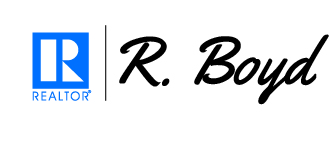October 03, 2022 – Americans’ confidence rose to the highest level in six months in September and their spending remained steady despite higher prices. Wage growth, however, is not keeping pace with inflation and thus consumers are increasingly relying on their savings to offset the higher cost of living. As households’ savings dwindle while higher interest rates push up credit card debt, consumer confidence could dip in coming months as economic activity slows. As for the housing market, higher mortgage rates continue to worsen affordability and remain the major factor that holds back demand. Despite a slight improvement in sales in August, home buying activity is expected to be sluggish in the months ahead as rates remain high.
Pending home sales weaken as high interest rates worsen affordability: According to NAR’s Pending Home Sales Index (PHSI), a forward-looking indicator of home sales based on contract signings, pending home sales fell 2.0% to 88.4 in August at the national level. Compared to the same month of last year, pending transactions dwindled by 24.2% nationally and 35.4% in California. Rates have skyrocketed more than 1% point in the last six weeks, crunching affordability further and deeply cutting into contract signings. Pending sales will continue to decline from last year as long as rates remain elevated, and that will likely be the case until inflation starts cooling off.
August brings brief respite for new-home sales decline: A short reprieve in the rise of rates combined with price discounts provided a temporary boost to new-home sales in August, which jumped 28.8% over July 2022 to a 685K-unit annual pace. August’s rebound came after two months of consecutive declines. Sales of new single-family homes are only 0.1% below the August 2021’s level of 686k but are still running 14.1% slower than last year on a year-to-date basis. Sales improved in every region in August, with the West jumping 27.5% from last month, but dipping 24.0% from a year ago. While rates might have provided a brief window of opportunity in late July/early August for buyers to move forward with a purchase, more builders are turning to rate buy-downs and price-discounting to boost sales as rates started rising sharply in recent weeks.
Mortgage demand declines as interest rates keep climbing: Applications for both purchase and refinance decreased last week as mortgage rates moved up to multi-year high following another aggressive policy measure from the Fed to bring down inflation. Additionally, ongoing uncertainty about the impact of the Fed’s reduction of its MBS and Treasury holdings is adding upward pressure on mortgage rates. The 30-year fixed-rate mortgage averaged 6.70% as of September 29, the highest level since mid-2007 and was more than a percentage point higher than six weeks ago. With higher rates and economic uncertainty weighing on the decisions to buy, more buyers have opted to finance their home purchases with adjustable-rate mortgages (ARM), which generally have lower rates. The market share of ARM has grown to 10% of applications and reached nearly 20% of dollar volume last week.
Consumers gain confidence in September, though it may be short-lived: Both the consumer confidence index and the consumer sentiment survey showed improvement in consumers’ views towards their present situation as well as their inflation expectations. The near five-point gain in consumer confidence in September lifted the index to 108, the highest in five months. However, their views on inflation were likely influenced by declining gas prices and strong labor market during the time each respective survey was taken. With prices flaring up at the pump again in recent weeks and the Fed’s monetary policy tightening likely to have an impact on the economy soon, the confidence level could retreat in the next couple months.
Consumer spending rebounds, but high prices are chipping away at savings: Americans increased their spending by 0.4% in August, but stubbornly high inflation and a recent rebound in prices at the gas pump could stifle overall demand in the months ahead. With inflation outpacing wage growth, consumers continue to tap into their excess savings to offset the higher cost of living. The saving rate was as high as 26.3% in March 2021, but has since declined to 3.5% in August 2022, near levels seen during the 2007-09 Great Recession.
